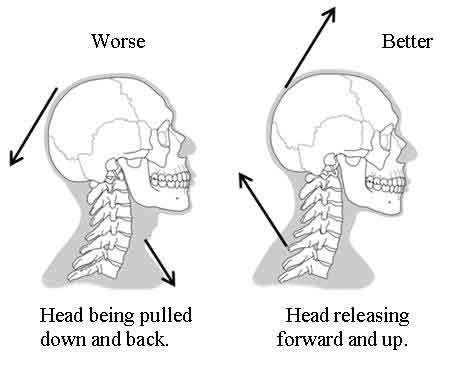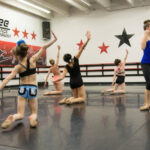As a dance content creator, especially focusing on the sensual and connected world of Zouk Dancing, I’ve learned to appreciate the nuances of body language even before the first step. The moment you embrace a zouk partner, you can sense their body’s mechanics – their breath, posture, and overall bodily coordination. You can instinctively tell if their body operates as a unified whole or just a collection of disparate parts. This initial connection often foreshadows the dance to come. Observing dancers, my attention is naturally drawn to those who exhibit relaxed and aligned posture. Someone who moves with poise and balance is captivating, even if their steps aren’t technically perfect.
This inherent appreciation for body alignment in dance underscores the importance of refining our posture, managing tension, and fostering natural movement patterns. One powerful method for achieving this is the Alexander Technique. This technique is a holistic approach to improving how we use our bodies and minds in everyday activities, and it’s incredibly beneficial for dancers, particularly zouk dancers seeking fluidity and connection. It works by releasing unnecessary tension and guiding the body back to its natural, balanced alignment. Alexander Technique lessons are typically hands-on, employing gentle touch, verbal guidance, and sometimes evocative imagery to facilitate change. Because it’s so deeply rooted in body awareness, kinaesthetic experience, and internal sensations, explaining it to someone who hasn’t experienced it can be challenging. It’s a method favored by performers – singers, musicians, actors, and dancers alike – as well as anyone looking to move with more ease in daily life. (Interestingly, this blog’s very first post touched upon similar principles for everyday body use outside of dance.)
For me, improving my posture specifically for dancing, especially for the close embraces of zouk, has been an ongoing journey. For years, I consciously tried to maintain an open chest while dancing zouk. It would work momentarily, but as soon as my focus waned, my chest would collapse, and my shoulders would round forward again. It felt like a constant battle against my body’s natural tendencies.
I’d been intrigued by the Alexander Technique for a long time, but never prioritized taking a lesson. Then, last spring, my wife gifted me an introductory session for my birthday. Despite some prior reading, the actual experience was still surprisingly insightful and impactful.
 HeadNeck
HeadNeck
Alexander Technique emphasizes the crucial relationship between the head, neck, and overall body alignment, essential for fluid zouk movement.
The Alexander Technique lesson itself was a physical and mental exploration. The teacher used his hands to gently guide and apply subtle pressure to different parts of my body, primarily focusing on my neck and back. This happened while I performed simple movements like sitting, standing, and transitioning between the two. There was also table work, where I lay down while the teacher worked on releasing tension in various areas. The mental aspect involved directing my attention inward, following the teacher’s instructions on mental imagery and points of focus to encourage release and realignment.
After the lesson, a curious sensation arose – I felt like I was slouching. However, when I checked my reflection, the mirror told a different story. I was standing taller, with noticeably improved body alignment. My upper body felt relaxed, and my shoulders seemed broader and more open than usual. This new posture felt very different from my previous attempts at “good posture,” which often involved forced chest lifting and excessive tension. This time, there was less effort and significantly less strain. The feeling of slouching was simply my unfamiliarity with standing upright with minimal tension. My ingrained body awareness was misleading me. Later, my wife observed that my walk appeared grounded and relaxed, yet perfectly upright – qualities highly desirable in zouk and partner dancing in general.
The teacher’s hands-on guidance provided a kinaesthetic understanding that books alone couldn’t offer. I was able to apply the lessons learned almost immediately to my zouk dancing. In my very next zouk practice session, I felt a newfound sense of relaxed freedom in my movement. Reviewing practice videos confirmed this subjective feeling; the way I moved and held my body was visibly improved. Moreover, the feedback from my zouk partners was telling – they noted that my body felt remarkably relaxed in close embrace, a crucial element for comfortable and connected zouk.
https://www.youtube.com/watch?v=sFxR_8SNtrI
Observe the difference: The top video shows pre-Alexander Technique dance, while the bottom video demonstrates improved posture and fluidity after lessons.
For your own comparison, the video above shows a zouk demonstration I did a few months before my first Alexander Technique lesson. Below it is a practice video recorded shortly after. In the first video, I can see myself using unnecessary tension to maintain posture and force my chest open. My back appears narrow, and my chin is lifted, misaligning my head and neck – common pitfalls many dancers fall into. In the second video, the improvements are evident, at least to my trained eye. My movement is more relaxed yet aligned, my neck is elongated, and my back is broader, all contributing to a more grounded and fluid zouk dance.
Since that initial session, I have continued Alexander Technique lessons and plan to make them an ongoing part of my dance development. The Alexander Technique has made a significant and positive impact on my dancing, particularly in zouk, allowing for more effortless movement, deeper connection with partners, and a more grounded and enjoyable dance experience overall. If you’re looking to enhance your zouk dancing through improved body awareness and movement efficiency, exploring the Alexander Technique could be a transformative step.
Article by: Jukka Välimaa
Learn more about the Alexander Technique: alexandertechnique.com

